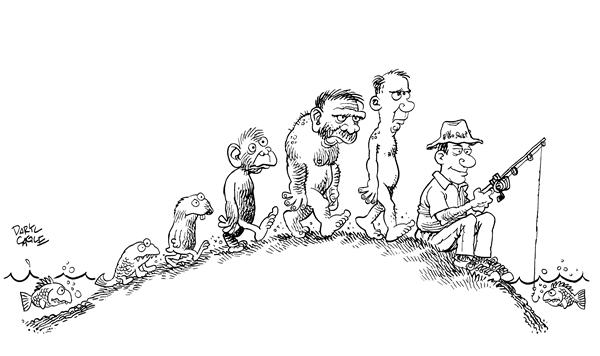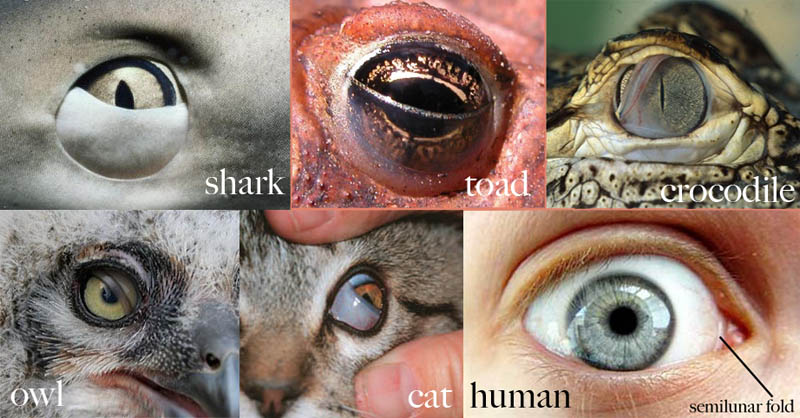If you’re lucky enough to have a Natural History museum in your area, then you have the ability to see many fossils and remains of animals that are meant to portray various evolutionary advances over their time spent on earth, including humans.
If this is not this case, don’t worry, you’re not out of luck at all! In fact, you just may have the most fascinating living specimen riddled with antiques of its evolutionary past with you at this very moment, your physical body!

Your body is riddled with natural relics!
Think about all the things on our body that we actually don’t need anymore! For example, body hair. With clothes even the “goose bumps” that appear on our skin are minor irritations; as opposed to our ancestors who needed body hair for warmth in conjunction with goose bumps to increase the surface area on their skin in order to retain heat!
From remnants of a third eyelid, to the useless wisdom teeth in our mouth that we no longer need in order to eat-there are numerous antiques that our human body has hung onto! However, that is until recently when it has come to be known that a particular tendon that was useful to our ancestors who swung from tree to tree is not found in some people.

Ongoing human evolution!
That’s right, if you thought humans were finished with evolving you would be in the wrong unfortunately. This is quite exciting, after all, what will humans look like a 5000 years from now? Perhaps they would seem quite odd to us in fact!
The “tendon of the hour” so to speak is the palmaris longus! It is located in your forearm and, if you have it, is easily discernable by placing your palm face up, bending your wrist, and then closing your fingers! You will see it rear itself at the base of your wrist!
The most famous theory of evolution, which was presented by Charles Darwin in 1859, has been a hot topic since the book “On the Origin of Species” was published. It’s been scrutinized and argued for over a century now, and there are still those that quickly dismiss the logic for a myriad of reasons. Despite what you think of Darwin’s theory, the evidence of evolution is right in front of you – on your own body.
Take for instance the goosebumps you get when you get a chill. Goosebumps are caused by a tiny muscle contraction on the surface of the skin that makes our hair stand up straight. This was useful when our ancient ancestor’s bodies were covered in thick hair because a thicker layer of hair created a better layer of insulation. Granted, not all of us have that same layer of body hair, but the tiny muscles in our skin still contract the same way. They also contract when we get a proverbial “chill” like hearing a noise in the middle of the night. That same muscle contraction would have made our, now non-existent, body hair puff out like an angry cat.
In the following video, you will see other examples of evolutionary evidence that you can check yourself for. Most notably, the presence of a vestigial muscle in your forearm known as the palmris longus. This muscle is one that has slowly disappeared from about 85-90% of people over time, but some people still have it. If you lay your arm flat on a hard surface, touch your pinky and thumb, and slightly curl your wrist up – if you have this evolutionary holdover you should see a tendon right in the middle of your wrist. Don’t fret if you don’t see the tendon, it has nothing to do with hand strength. If you do see it, even just in one arm, you are one of the rare people that still have this trait of our ancient ancestors.
Check out this video for other sign of human evolution that may still exist in your body:
So who doesn’t have the tendon? Well evolution takes time!
Of course, 10-15% of people today no longer have this particular tendon, and are none the worse for wear! If you are of the 10-15% you are on your way to evolution, and if you are still with tendon, well then you have learned a little about your ancestral past without having to purchase that ticket to a Natural History Museum!
Perhaps this just might be the perfect Segway in conversation to an invitation towards an education outing or perhaps it’s a great way to get children interested in Natural History! Do you have the tendon? Do your friends? What an opportunity to find out!

Facebook Comments